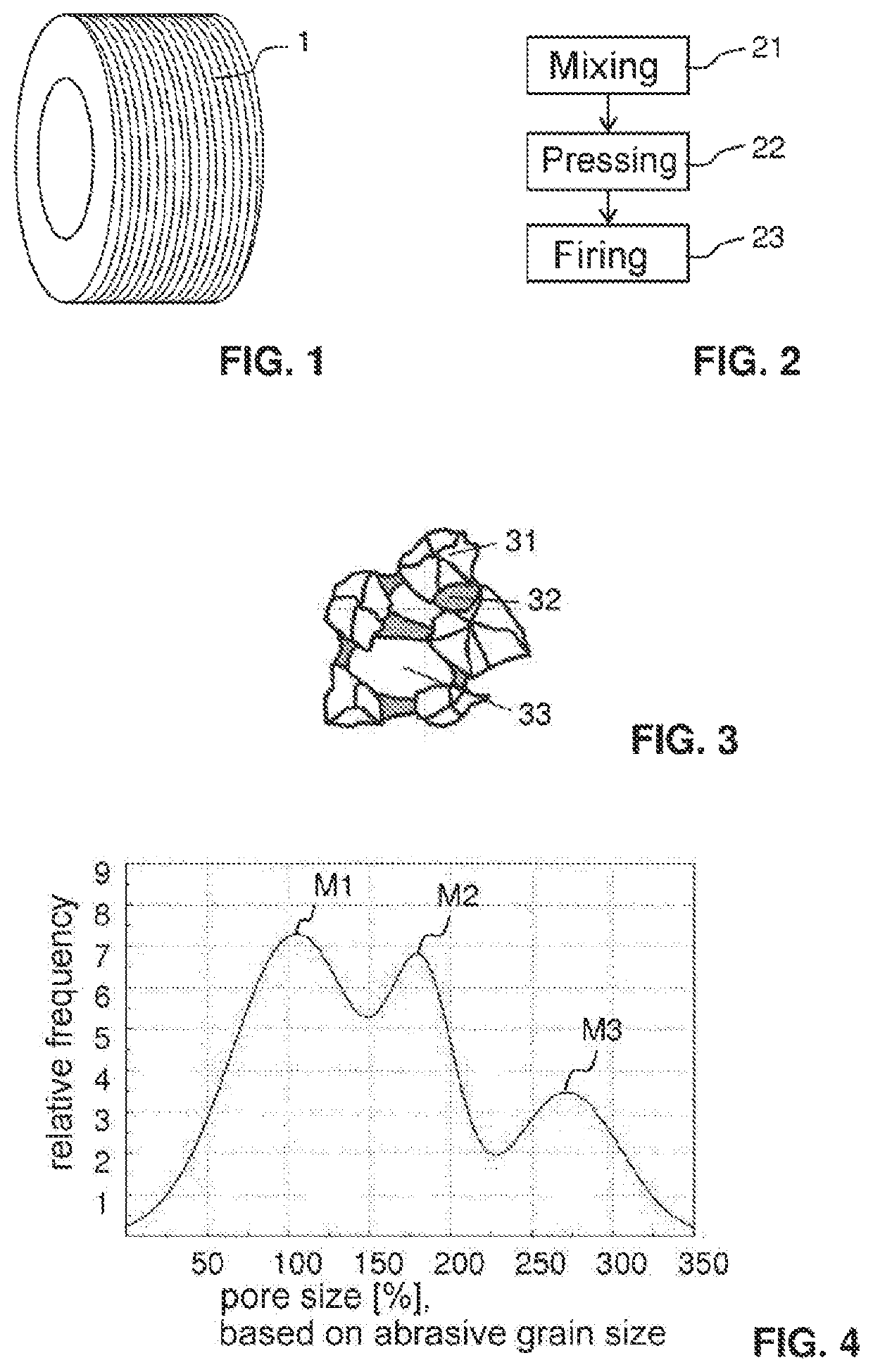Open-pore, ceramic-bonded grinding tools, method for producing same, and pore former mixtures used to produce same
a technology of ceramic bonding and grinding tools, which is applied in the field of open-pore, ceramic bonding grinding tools, method of producing same, and pore former mixtures used to produce same, can solve the problems that pollution and environmental damage cannot be avoided entirely when naphthalene is used, and the workers at the production site are affected, and the pore former mixtures are used to produce the same, etc., to achieve stable distribution, good mixing behavior, and low swelling tendency
- Summary
- Abstract
- Description
- Claims
- Application Information
AI Technical Summary
Benefits of technology
Problems solved by technology
Method used
Image
Examples
Embodiment Construction
[0051]FIG. 1 shows on an exemplary basis a ceramic-bonded grinding tool in the form of a grinding worm for the hard precision machining of gearing systems. The invention, however, is not confined to such grinding worms, but can instead be applied to any kinds of ceramic-bonded grinding tools.
[0052]FIG. 2 illustrates a simplified flow plan for the production of a ceramic-bonded grinding tool. First of all, abrasive grains, a ceramic binder, a pore former mixture, and optionally adhesives and additives are mixed (step 21). The resulting compound is subsequently removed from the mixer, sieved, placed into a mold, and pressed using a hydraulic press (step 22). The resulting green compact is fired in an oven (step 23).
[0053]The microstructure of a grinding tool fabricated in this way is illustrated in highly schematic form in FIG. 3. The abrasive grains 31 are connected by binding bridges 32, consisting of the ceramic binder. In between there is a multiplicity of pores 33 of different si...
PUM
| Property | Measurement | Unit |
|---|---|---|
| pore size distribution | aaaaa | aaaaa |
| diameter | aaaaa | aaaaa |
| diameter | aaaaa | aaaaa |
Abstract
Description
Claims
Application Information
 Login to View More
Login to View More - R&D
- Intellectual Property
- Life Sciences
- Materials
- Tech Scout
- Unparalleled Data Quality
- Higher Quality Content
- 60% Fewer Hallucinations
Browse by: Latest US Patents, China's latest patents, Technical Efficacy Thesaurus, Application Domain, Technology Topic, Popular Technical Reports.
© 2025 PatSnap. All rights reserved.Legal|Privacy policy|Modern Slavery Act Transparency Statement|Sitemap|About US| Contact US: help@patsnap.com

